Kenya, located in East Africa, is a country renowned for its breathtaking landscapes, rich wildlife, and vibrant cultures. From the iconic savannas of the Maasai Mara to the stunning beaches along the Indian Ocean, Kenya offers a diverse array of experiences for travelers. Its capital city, Nairobi, serves as a bustling hub for commerce and culture, while the country’s national parks and reserves provide unparalleled opportunities for wildlife viewing and adventure.
Table of Contents
Geography
Kenya is situated in East Africa, bordered by Ethiopia to the north, Somalia to the east, the Indian Ocean to the southeast, Tanzania to the south, Uganda to the west, and South Sudan to the northwest. The country covers an area of approximately 580,367 square kilometers, making it the 48th largest country in the world.
The diverse geography of Kenya includes vast savannas, highlands, mountains, and coastal plains. The Great Rift Valley, which runs through the country, is home to stunning landscapes and unique geological formations. Mount Kenya, the second-highest peak in Africa, is a prominent feature of the landscape and offers excellent trekking opportunities.
Kenya’s climate varies from tropical along the coast to arid in the northern regions, providing a range of ecosystems that support a rich variety of flora and fauna. The country is famous for its national parks and reserves, including the Maasai Mara, Amboseli, and Tsavo, which are renowned for their incredible wildlife populations.
States of Kenya
Kenya is divided into 47 counties, which serve as the primary administrative divisions of the country. These counties function similarly to states or provinces in other countries. Here’s a table listing all 47 counties in Kenya along with their capitals:
| No. | County | Capital |
|---|---|---|
| 1 | Mombasa | Mombasa |
| 2 | Kwale | Kwale |
| 3 | Kilifi | Kilifi |
| 4 | Tana River | Hola |
| 5 | Lamu | Lamu |
| 6 | Taita-Taveta | Voi |
| 7 | Garissa | Garissa |
| 8 | Wajir | Wajir |
| 9 | Mandera | Mandera |
| 10 | Marsabit | Marsabit |
| 11 | Isiolo | Isiolo |
| 12 | Meru | Meru |
| 13 | Tharaka-Nithi | Chuka |
| 14 | Embu | Embu |
| 15 | Kitui | Kitui |
| 16 | Machakos | Machakos |
| 17 | Makueni | Wote |
| 18 | Nyandarua | Ol Kalou |
| 19 | Nyeri | Nyeri |
| 20 | Kirinyaga | Kerugoya |
| 21 | Murang’a | Murang’a |
| 22 | Kiambu | Kiambu |
| 23 | Turkana | Lodwar |
| 24 | West Pokot | Kapenguria |
| 25 | Samburu | Maralal |
| 26 | Trans-Nzoia | Kitale |
| 27 | Uasin Gishu | Eldoret |
| 28 | Elgeyo-Marakwet | Iten |
| 29 | Nandi | Kapsabet |
| 30 | Baringo | Kabarnet |
| 31 | Laikipia | Nanyuki |
| 32 | Nakuru | Nakuru |
| 33 | Narok | Narok |
| 34 | Kajiado | Kajiado |
| 35 | Kericho | Kericho |
| 36 | Bomet | Bomet |
| 37 | Kakamega | Kakamega |
| 38 | Vihiga | Mbale |
| 39 | Bungoma | Bungoma |
| 40 | Busia | Busia |
| 41 | Siaya | Siaya |
| 42 | Kisumu | Kisumu |
| 43 | Homa Bay | Homa Bay |
| 44 | Migori | Migori |
| 45 | Kisii | Kisii |
| 46 | Nyamira | Nyamira |
| 47 | Nairobi | Nairobi |
History
The history of Kenya is marked by the influence of various ethnic groups, colonial rule, and the struggle for independence. The region has been inhabited for thousands of years, with evidence of early human settlements dating back to prehistoric times. The major ethnic groups in Kenya include the Kikuyu, Luo, Maasai, and Kalenjin, each contributing to the country’s cultural diversity.
In the late 19th century, European powers began to explore and colonize East Africa, leading to the establishment of British control over Kenya in 1895. The colonial period was characterized by the exploitation of resources and the displacement of local communities. The introduction of cash crops and the establishment of railways transformed the economy but often at the expense of indigenous peoples.
The struggle for independence gained momentum in the mid-20th century, with various nationalist movements emerging. The Mau Mau Uprising (1952-1960) was a significant event in the fight against colonial rule, highlighting the desire for land and political rights. On December 12, 1963, Kenya finally gained independence from British rule, with Jomo Kenyatta becoming the country’s first president.
Top Ten Must-Visit Destinations
1. Maasai Mara National Reserve

The Maasai Mara is one of Africa’s most famous wildlife reserves, known for its incredible biodiversity and the annual wildebeest migration. Visitors can embark on thrilling safari adventures to witness the “Big Five” (lion, leopard, elephant, buffalo, and rhinoceros) in their natural habitat. The reserve offers a range of accommodation options, from luxury lodges to budget camps.
2. Nairobi National Park

Nairobi National Park is a unique wildlife reserve located just outside the capital city, offering visitors the chance to see lions, giraffes, and zebras against the backdrop of the Nairobi skyline. The park features various habitats, including savannas, wetlands, and forests, making it a great spot for both wildlife viewing and picnicking.
3. Amboseli National Park
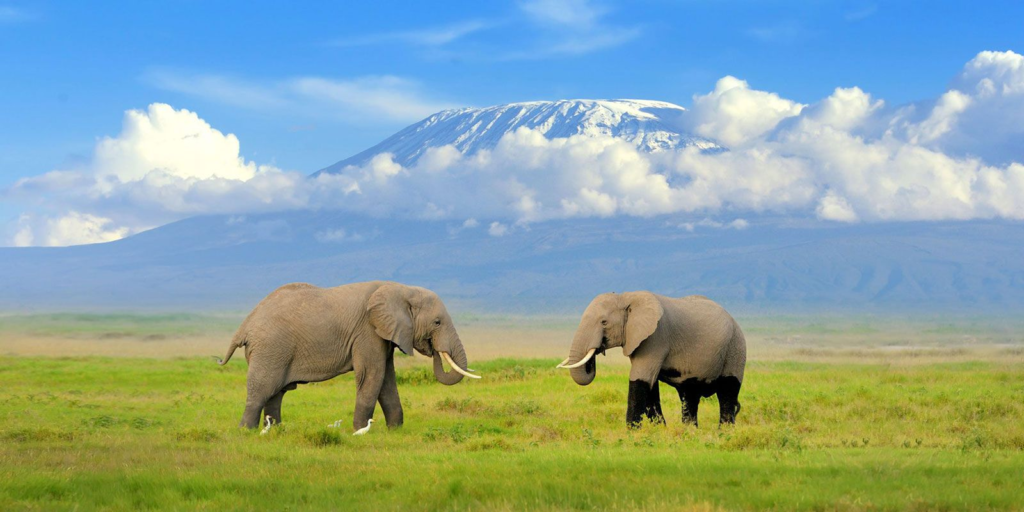
Amboseli National Park is famous for its stunning views of Mount Kilimanjaro and its large herds of elephants. The park offers excellent opportunities for photography and wildlife observation, particularly in the wetlands where elephants gather. Visitors can enjoy guided safari tours and cultural experiences with local Maasai communities.
4. Lake Nakuru National Park
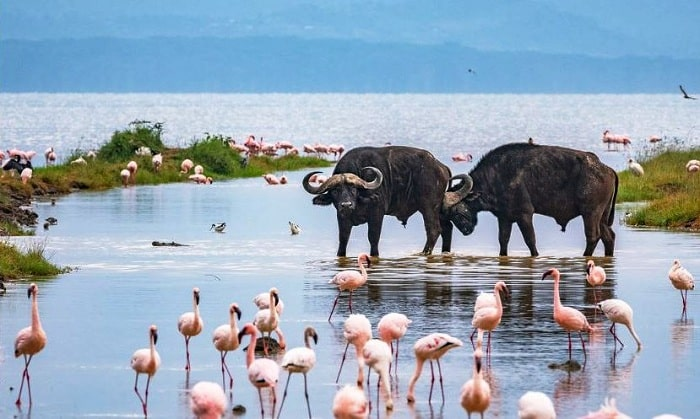
Lake Nakuru National Park is renowned for its spectacular flamingo populations that gather along the lake’s shores. The park is also home to a variety of wildlife, including white and black rhinos, lions, and leopards. Visitors can explore the park’s diverse landscapes, including acacia forests and grasslands, while enjoying birdwatching opportunities.
5. Tsavo National Park

Tsavo National Park is one of the largest national parks in Kenya and is divided into two sections: Tsavo East and Tsavo West. The park is known for its diverse wildlife, including the famous Tsavo lions. Visitors can explore the stunning landscapes, including lava fields, waterholes, and scenic hills, while enjoying guided safaris.
6. Lamu Island
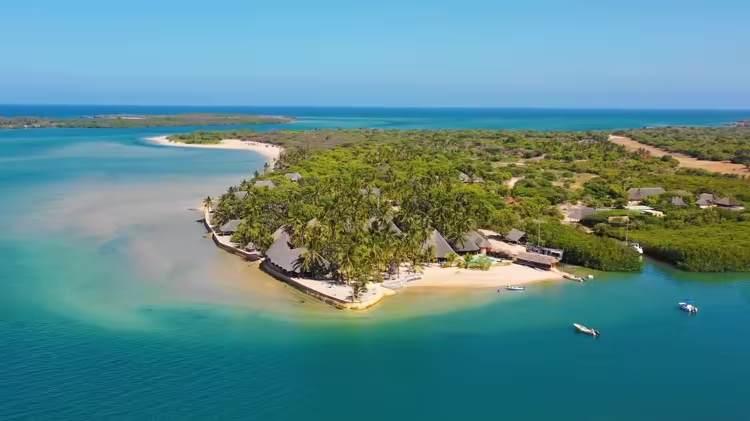
Lamu Island is a UNESCO World Heritage site that showcases the rich history and culture of the Swahili coast. Visitors can explore the narrow streets of Lamu Town, visit the Lamu Museum, and enjoy the laid-back atmosphere of this idyllic island. The pristine beaches offer opportunities for relaxation and water sports.
7. Mount Kenya
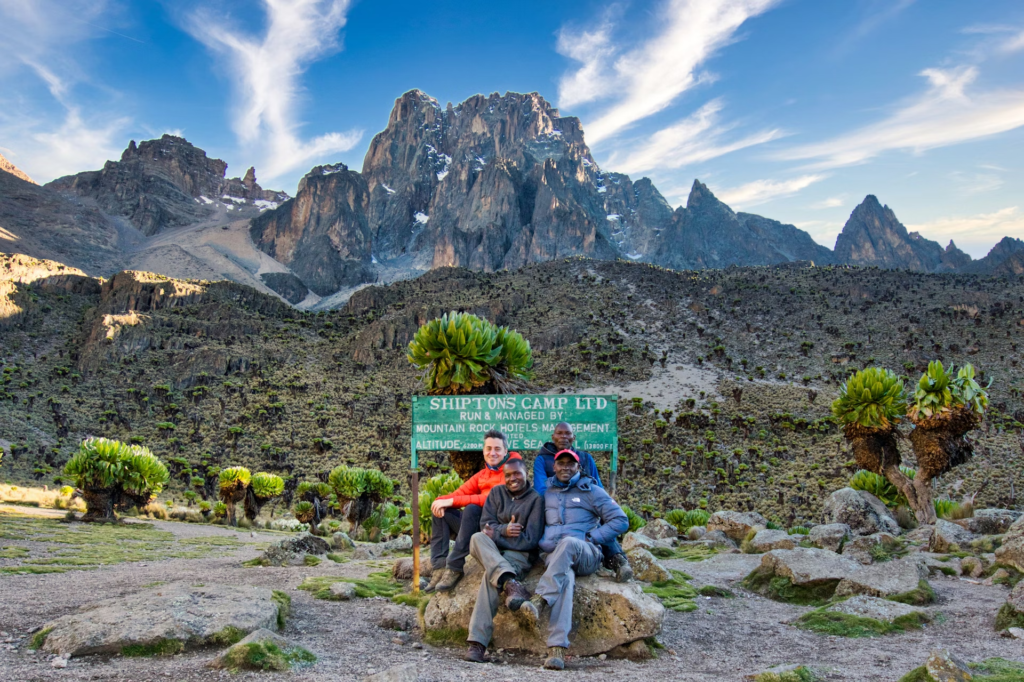
Mount Kenya is the highest mountain in Kenya and offers breathtaking views and challenging hiking opportunities. The mountain is surrounded by diverse ecosystems, including rainforests and alpine moorlands. Climbers can choose from various routes to reach the summit, and the area is also home to unique wildlife and endemic plant species.
8. Hell’s Gate National Park
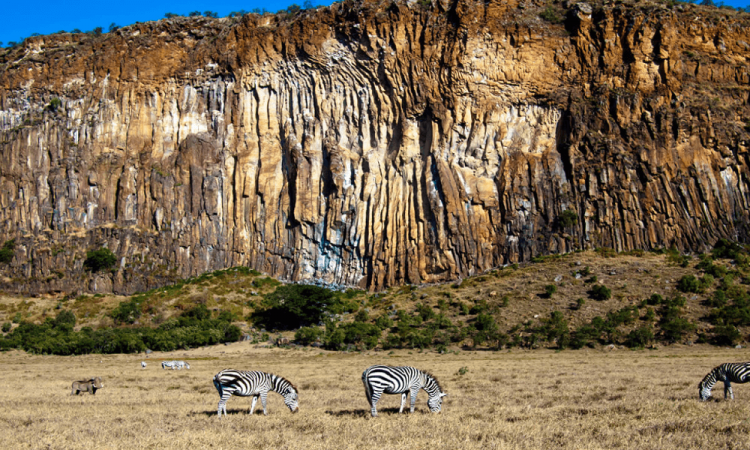
Hell’s Gate National Park is known for its stunning landscapes, including dramatic cliffs and geothermal activity. Visitors can hike or bike through the park, exploring its unique rock formations and wildlife. The park is also home to hot springs and the famous Ol Karia Geothermal Plant, providing a fascinating glimpse into Kenya’s renewable energy initiatives.
9. Samburu National Reserve
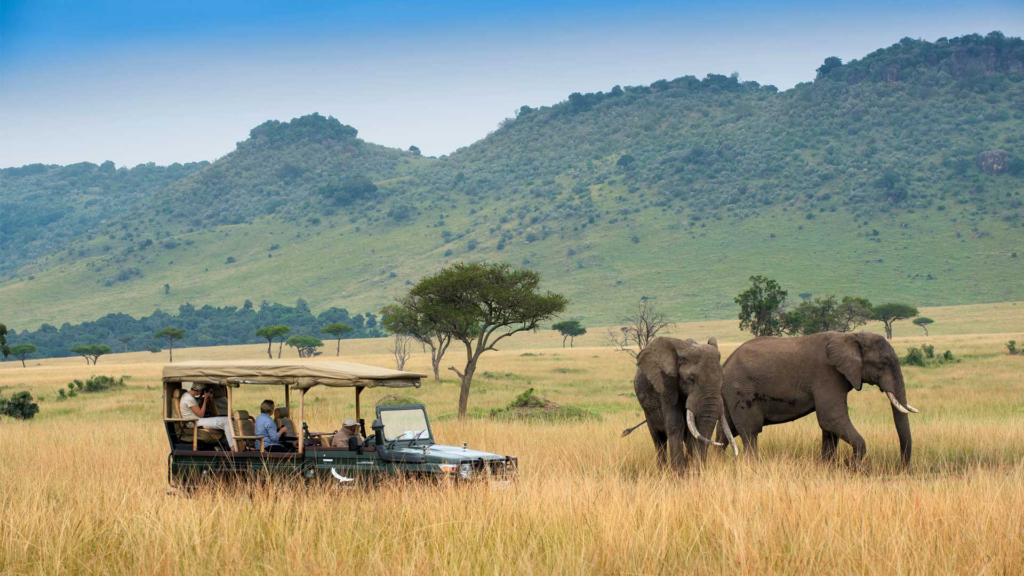
Samburu National Reserve is a lesser-known gem in northern Kenya, offering a more remote and authentic safari experience. The reserve is home to unique wildlife species, including the reticulated giraffe, Grevy’s zebra, and Somali ostrich. Visitors can enjoy game drives and cultural experiences with the local Samburu people.
10. Diani Beach

Diani Beach is a stunning stretch of coastline along the Indian Ocean, known for its white sandy beaches and crystal-clear waters. Visitors can enjoy a range of water activities, including snorkeling, scuba diving, and kite surfing. The area also offers vibrant nightlife and a variety of beachfront resorts and restaurants.
Culture
Kenya is a vibrant tapestry of cultures, with over 40 different ethnic groups, each with its own unique traditions, languages, and customs. The largest ethnic groups include the Kikuyu, Luo, Maasai, and Kalenjin, contributing to the country’s rich cultural diversity. Swahili and English are the official languages, while many indigenous languages are spoken throughout the country.
Traditional music and dance are integral parts of Kenyan culture. Each ethnic group has its own unique musical styles and instruments, such as the mbira (thumb piano) and ngoma (drum). Celebrations and rituals often include traditional dances, showcasing the cultural heritage of the different communities.
Artisan craftsmanship is highly valued in Kenya, with skilled artisans creating intricate beadwork, pottery, and wood carvings. Markets across the country offer a vibrant display of traditional crafts, providing visitors with opportunities to purchase unique souvenirs while supporting local artisans. The Maasai are particularly known for their colorful beadwork and handcrafted jewelry.
Festivals
Kenya hosts a variety of festivals that celebrate its rich cultural heritage and traditions. One of the most notable is the Maasai Mara Wild Beast Migration, which attracts thousands of tourists each year to witness the spectacular movement of wildebeest and zebras across the savanna. This natural phenomenon is celebrated with various cultural events and activities.
The Lamu Cultural Festival is another important celebration, showcasing the rich history and traditions of the Swahili coast. The festival features traditional music, dance performances, art exhibitions, and sailing competitions, bringing together local communities and visitors in a vibrant celebration of culture.
Additionally, the Kisumu Carnival celebrates the cultural diversity of the Luo community, featuring traditional music, dance, and local cuisine. This festival emphasizes community bonding and cultural exchange, allowing participants to showcase their unique traditions.
Economy
Kenya has a diverse economy that relies on agriculture, tourism, and services. Agriculture is the backbone of the economy, employing a significant portion of the population and contributing to exports. Key agricultural products include tea, coffee, horticultural products, and livestock.
Tourism is a major driver of economic growth, with millions of visitors coming to Kenya each year to experience its wildlife and natural beauty. National parks and reserves attract wildlife enthusiasts and adventure seekers, making tourism a vital sector in the country’s economy.
In recent years, Kenya has also seen growth in the manufacturing and services sectors, with a focus on technology and innovation. The country is becoming a regional hub for technology and entrepreneurship, attracting foreign investment and fostering a vibrant startup ecosystem.
Cuisine
Kenyan cuisine is a delightful mix of flavors and influences from various cultures. The staple food is ugali, a stiff porridge made from maize flour, often served with vegetables, meat, or fish. Other popular dishes include sukuma wiki (collard greens), nyama choma (grilled meat), and samosas.
Street food is an integral part of Kenyan culinary culture, with vendors offering delicious snacks such as kebabs, mandazi (fried dough), and chapati. Coastal cuisine features seafood, reflecting the country’s access to the Indian Ocean, with dishes like fish curry and prawns being popular among locals and visitors alike.
Kenya’s diverse cultural heritage is also reflected in its cuisine, with different regions offering unique dishes and flavors. Communal dining is common, with families and friends gathering to share meals and enjoy each other’s company, emphasizing the importance of togetherness in Kenyan culture.
Top Eight Most Famous Food
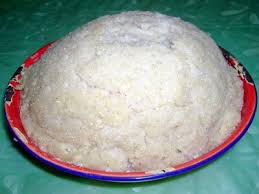

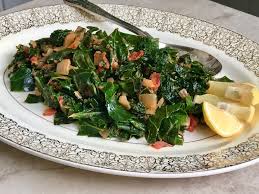


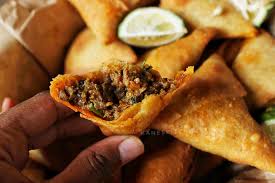


Interesting Facts
- Kenya is home to the Great Rift Valley, one of the most significant geological features on Earth.
- The country hosts the world’s largest population of wildebeest, especially during the migration season.
- Kenya is known for its stunning national parks, with over 50 protected areas.
- The Maasai people are famous for their distinctive customs and dress, including beaded jewelry and shuka (cloaks).
- The Nairobi National Park is the only wildlife park located within a capital city.
- Kenya is known as the “Cradle of Humanity” due to significant archaeological discoveries of early human fossils.
- The country has a vibrant art scene, with local artists showcasing their work in galleries and markets.
- Kenya has a diverse climate, ranging from tropical along the coast to arid in the north.
- The country celebrates Mashujaa Day (Heroes’ Day) on October 20 each year to honor its heroes.
- Kenya’s national animal is the African lion, symbolizing strength and courage.
Conclusion
Kenya is a captivating destination that offers a unique blend of natural beauty, cultural diversity, and rich history. From the stunning landscapes of the Maasai Mara to the vibrant streets of Nairobi, travelers can experience the best of Africa in this remarkable country. With its warm hospitality, rich traditions, and abundant wildlife, Kenya promises an unforgettable journey for all who visit.
let’s enjoy few years on earth with peace and happiness….✍🏼🙏

